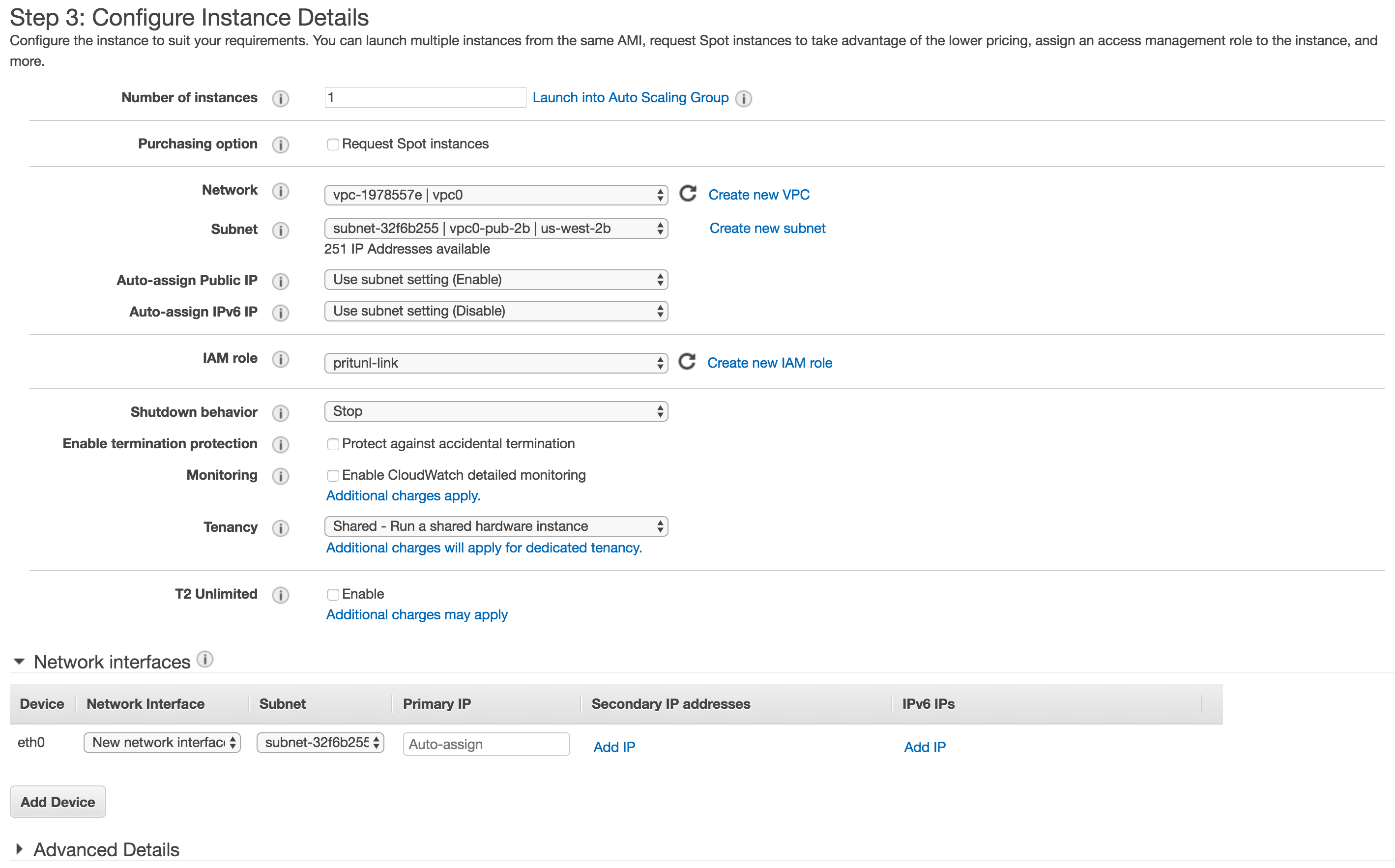
- #Pritunl debug disable how to
- #Pritunl debug disable install
- #Pritunl debug disable software
- #Pritunl debug disable free
#Pritunl debug disable free
Similarly, replace the keys with the appropriate strings you generated.Īs you can see, the addresses I picked for each computer are 192.168.2.1 and 192.168.2.2, because that subnet was free in my setup.

Address = 192.168.2.2 PrivateKey = ListenPort = 21841 PublicKey = Endpoint = :51820 AllowedIPs = 192.168.2.0/24 # This is for if you're behind a NAT and # want the connection to be kept alive. If you just want a single connection between two computers (say, to connect your laptop to your home server), the configuration is pretty simple. We’ll go over some common scenarions along with the configuration for each. Go to /etc/wireguard/ and create a file called wg0.conf on each of your computers. Common scenariosĪfter you’ve done the above, you’re ready to configure WireGuard. If your VPN server is behind a NAT, you’ll also need to open a UDP port of your choosing ( 51820 by default).ĭo this for any computer you want to connect to (computers that you’ll connect from don’t need a port open, as far as I know, but correct me if I’m wrong). You need to paste the contents of these files in the config file, I’m afraid WireGuard doesn’t support referencing them by path yet. The publickey file is for telling the world, the privatekey file is secret and should stay on the computer it was generated on. This will generate two files, privatekey and publickey on each of the computers. $ wg genkey | tee privatekey | wg pubkey > publickey $ umask 077 # This makes sure credentials don't leak in a race condition. On each of the computers that will be in the VPN, create the directory /etc/wireguard/ and run these commands on each of the computers in the directory you just created:
#Pritunl debug disable install
To install WireGuard, see the installation page, it should be a pretty simple process.Īfter you’ve installed it, you will need to generate a private and a public key for each computer you want accessing the VPN.ĭue to WireGuard’s design, both computers on either end of a connection will need to have each other’s public key. Keep in mind that the configuration files for wg-quick aren’t compatible with the wg executable, but wg-quick is all we’ll need, so that shouldn’t matter. Luckily, WireGuard comes with a helper script, wg-quick, which will do pretty much everything the average user needs. To do anything other than that, you’ll need to configure your network for it, which is “out of scope” for the WireGuard docs, but which I consider very much in the scope of a VPN. It just connects two computers, directly, quickly and securely. It doesn’t really let you access other computers on either end of the network, or forward all your traffic through the VPN server, or anything like that.
#Pritunl debug disable how to
Since the initial conditions at the creation of the universe set things up so WireGuard would eventually be underdocumented, I am going against Creation itself and showing you how to easily configure and run it.Ī guard that looks kinda wiry, and makes sure you don't subconsciously find this post dry and boring.Īt its core, all WireGuard does is create an interface from one computer to another.

The quickstart guide, the first thing I look at, mentions a configuration file that it never tells you how to write, and it also assumes you’re more familiar with networking than I am.

The only problem I’ve found with WireGuard is a lack of documentation, or rather a lack of documentation where you expect it.
#Pritunl debug disable software
Linus Torvalds himself said that he loves it, which took the software world by storm, as we weren’t aware that Linus was capable of love or any emotion other than perkele. WireGuard is a very simple VPN that uses state-of-the-art cryptography, and the buzz comes from both the fact that it’s simple and good at what it does, and the fact that it’s so good that it’s going to be included in the Linux kernel by default. You might have noticed the buzz around WireGuard lately.


 0 kommentar(er)
0 kommentar(er)
